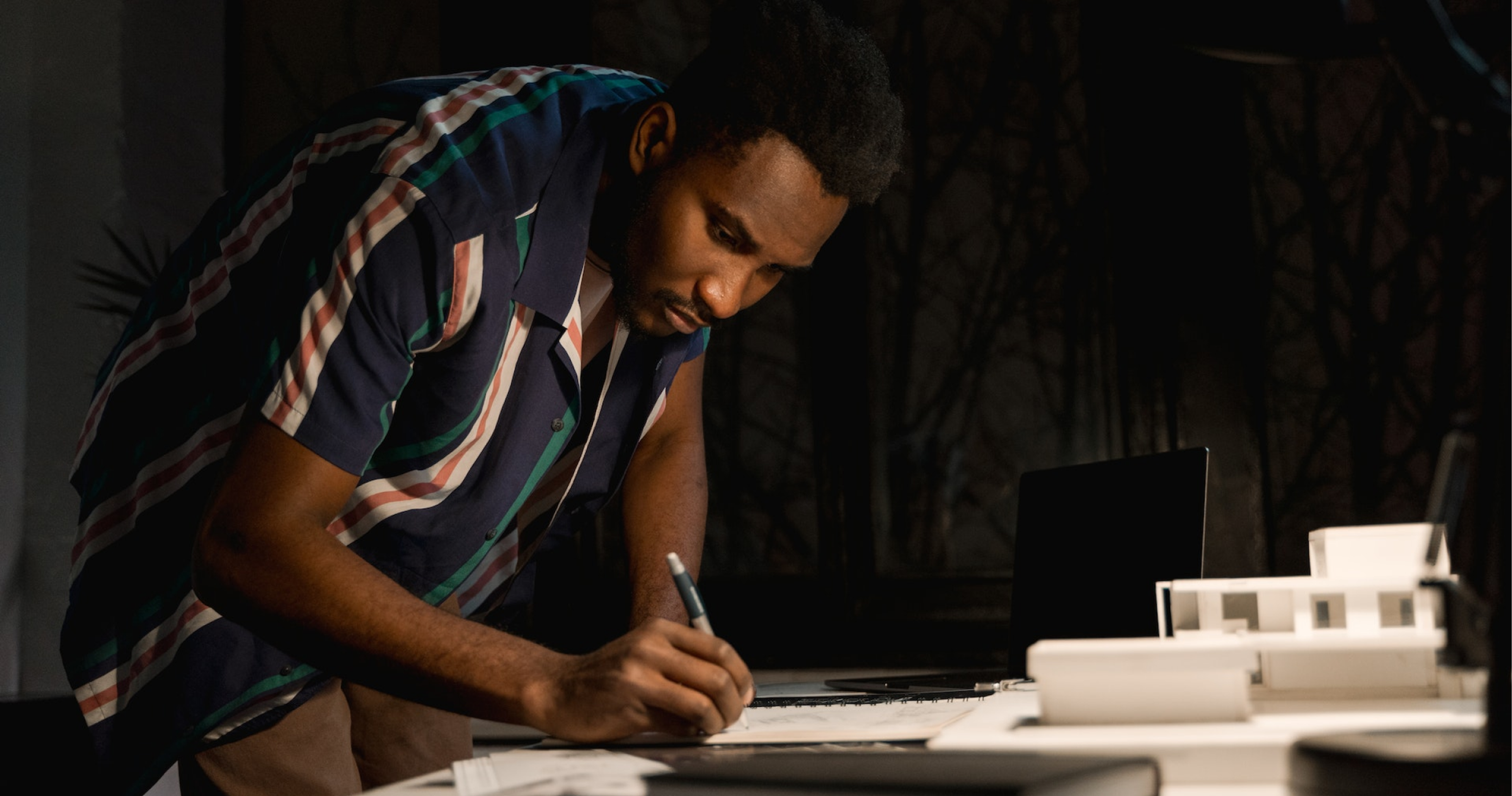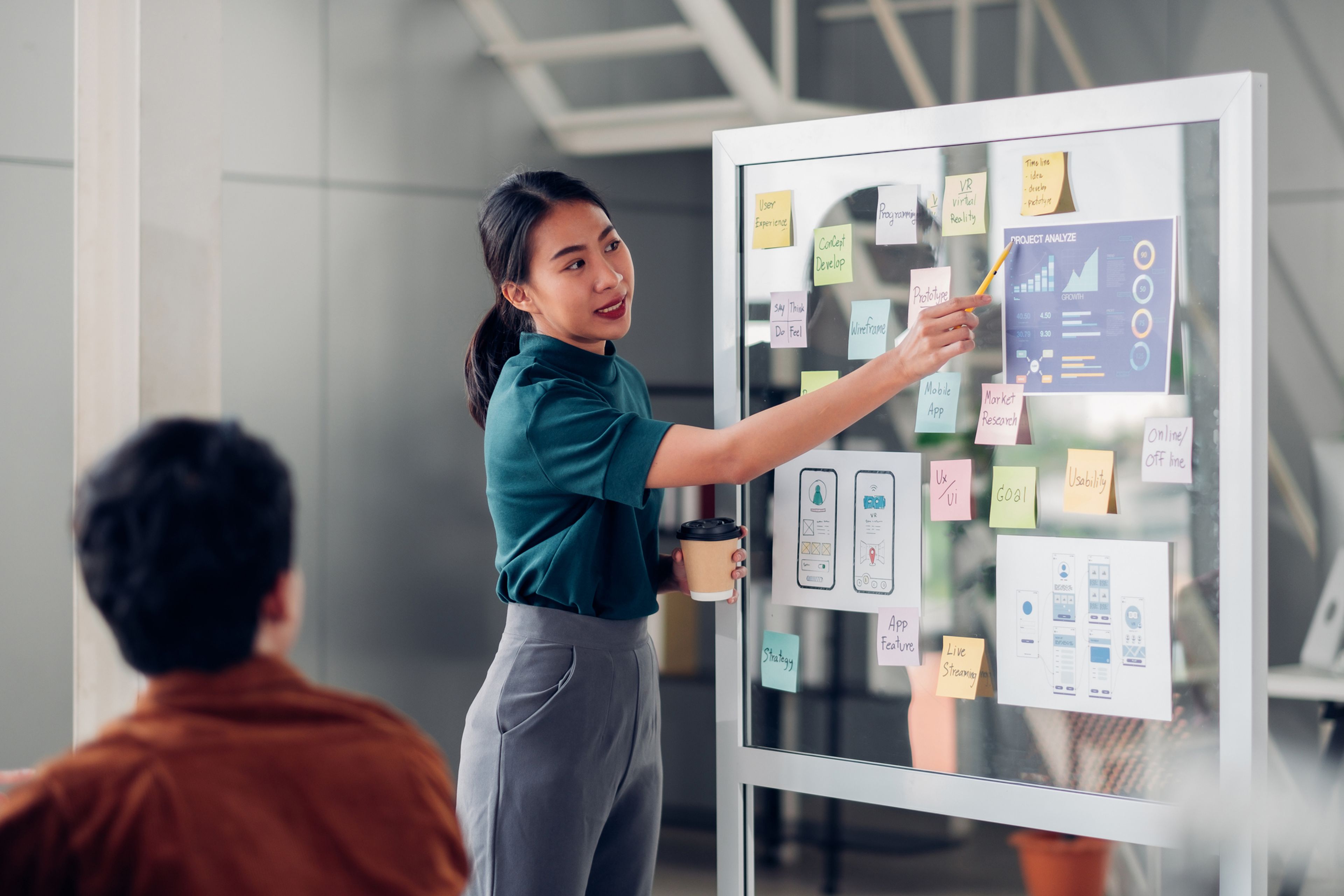Unlock the power of understanding your audience with user personas — a fundamental guide to crafting targeted experiences and products based on real user needs and behaviors
Personas are a powerful tool for user experience (UX) designers to help them create user-centered design solutions. Understanding user personas enables UX teams to focus on designing interfaces that work best for their target audience while ensuring they meet all key business objectives.
This article will explore user personas, how they differ from user archetypes, and why they matter in UX design. We will show multiple personas and also provide a step-by-step guide on creating compelling user personas.
What Is a User Persona in UX Design?
As a UX designer, you can gain insight into your ideal customer by crafting user personas — fictional representations of the people who will use the product you're designing. You'll begin this process by examining user research, which allows for an improved understanding of what users need from your product and their distinct characteristics, such as goals and behaviors.
To better market your product, constructing a typical user persona is essential. A user must create a persona that represents an existing or ideal customer that you create by speaking to users and structuring them according to demographic and psychographic data.
With this realistic character in hand, you can accurately target the right people with your marketing materials. They capture user demographic and behavioral data, such as user goals, needs, values, interests, and motivations. Create personas based on real data, on user research, user interviews, and surveys with real people.
Source: Freepik

Exploring the Various Types of Personas in UX Design
Let us consider some types of personas and their relevance in the design process.
Goal-Oriented Personas
This type of persona helps to understand how a user interacts with a product or service's interface. It is particularly useful when building an understanding of the product goals, motivation, and even behavior.
For example, a user who wants to purchase a flight ticket quickly might have the goal-directed persona aim to purchase a flight using a simple interface.
Role-Based Personas
In this type of persona, the emphasis is placed on the user and their role within a particular context or organization system, together with their responsibilities, workflows, and requirements linked to that role.
A good example would be an office manager who is described as needing a task management application to schedule and delegate work efficiently. Designers focus on the user's needs and develop tasks and features that automate many of those demands that are particular to a user's role.
Fictional Personas (Proto-Personas)
Used as placeholders, these personas are based on minimal information and, therefore, are inaccurate but valuable nonetheless. They come in handy when a team is design-less, ready to start the brainstorming stage, but lacks moderate user knowledge.
Source: medium
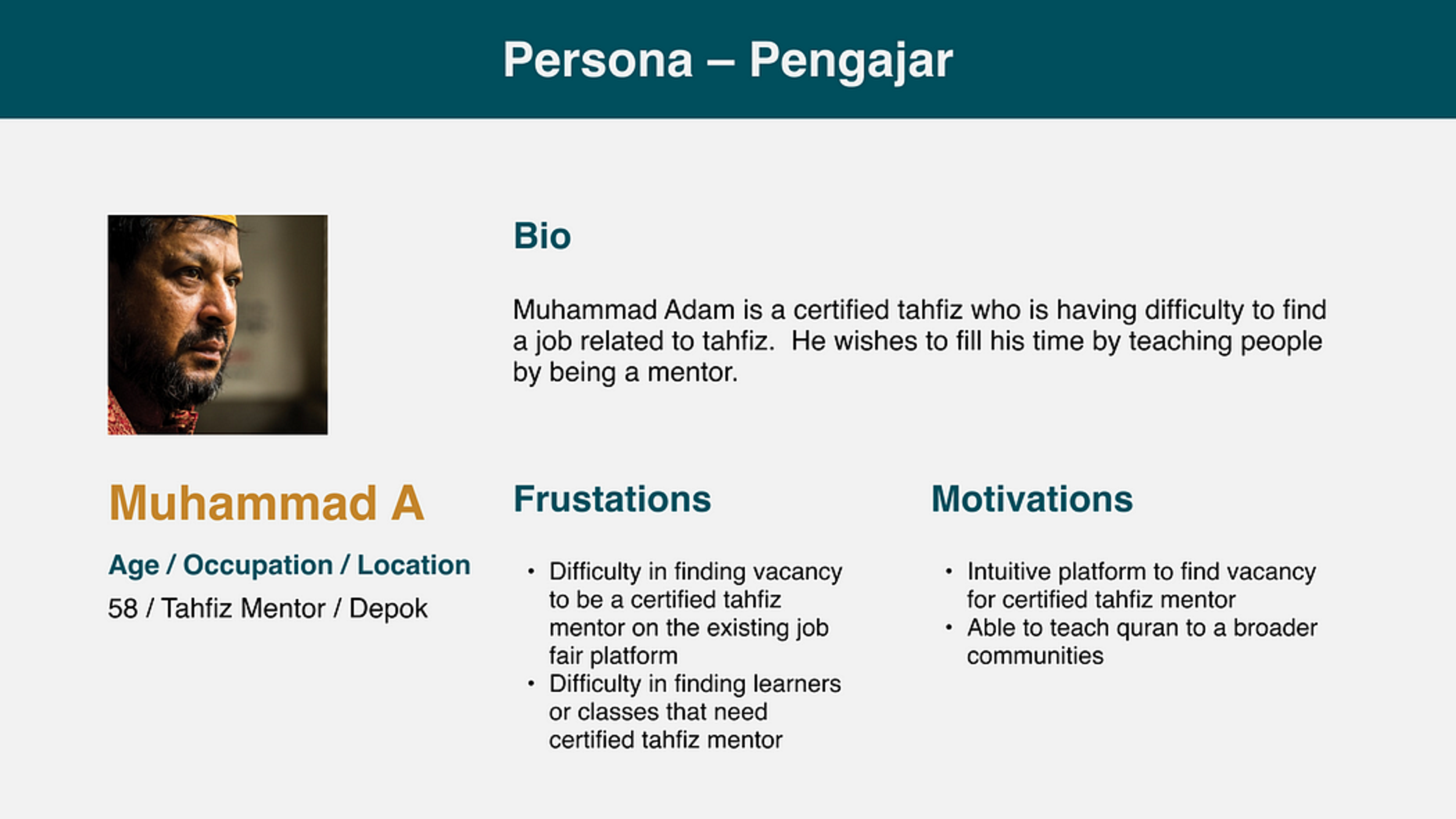
Engaging Personas
These are crafted with an element of interaction so that they can easily be remembered and have an appeal. They come with narratives, elaborate descriptions, and personal memorabilia to make them feel real.
Engaging personas helps foster empathy amongst design teams and facilitate a strong emotional bond with the user experience. An engaging persona may give a name, accomplishments, and a unique story, which makes mainliners sympathize with the persona's challenging motivation.
Guided decision-making and analysis in the context of designs that aim at user understanding can each be achieved through the combination of different types of personas or by selecting the most appropriate type for a project.
In any case, UX designers know their work will be more valuable if it is grounded in an in-depth understanding of the users they are designing for.
User Personas in UX Design: Why They Matter
Personas are essential in the design process because they allow the design team to approach their projects from a user-centered perspective.
Build Loyalty
If a design team wishes to create a product that benefits the people who will use it, they must possess strong empathy. Personas are essential in helping creators construct deeper understanding and compassion with users.
Source: Patrick Tomasso / Unsplash

By conducting user research and creating fictitious user personas, designers can understand what target users value and desire. This enables them to think more objectively about how their designs should meet real users' needs.
Visualizing a real-life persona allows designers to make better decisions as they envision the potential customer's expectations for the product or service.
By empathizing with these fictional characters, they can work towards delivering high-quality experiences that match their customers' desires.
As designers, it's vital to recognize a user for who they are and learn about their different personas.
The more an individual engages with users by seeing them as real people, the simpler it will be for them to consider all required when designing something special only meant for this specific audience.
When you identify with your target user base, creating what would work best in functionality and effectiveness becomes easier.
Share the Expectations
When working with multidisciplinary teams, all team members must be aligned on the same design decisions. A user persona effectively captures the most critical user data in a way everyone can comprehend and be aware of. It allows each participant to understand their expectations, creating more efficient results.
Ease the Decision-Making Process
By creating user personas, designers are equipped with the information they need to do user research findings develop a product strategy and perform usability testing sessions.
By doing qualitative research and gaining an in-depth comprehension of how users behave and their needs, product teams can determine who strictly the product is intended for and what features should be prioritized or excluded from a user perspective.
For instance, feature requests can be ordered based on how efficiently they meet the primary user persona(s) requirements.
How to Create a User Persona: A Step-by-Step Guide
Creating user personas is an integral part of the UX design thinking process. Here is a step-by-step guide on how to create a user persona.
Let's talk about each step with this example of a user persona.
Source: Xtensio
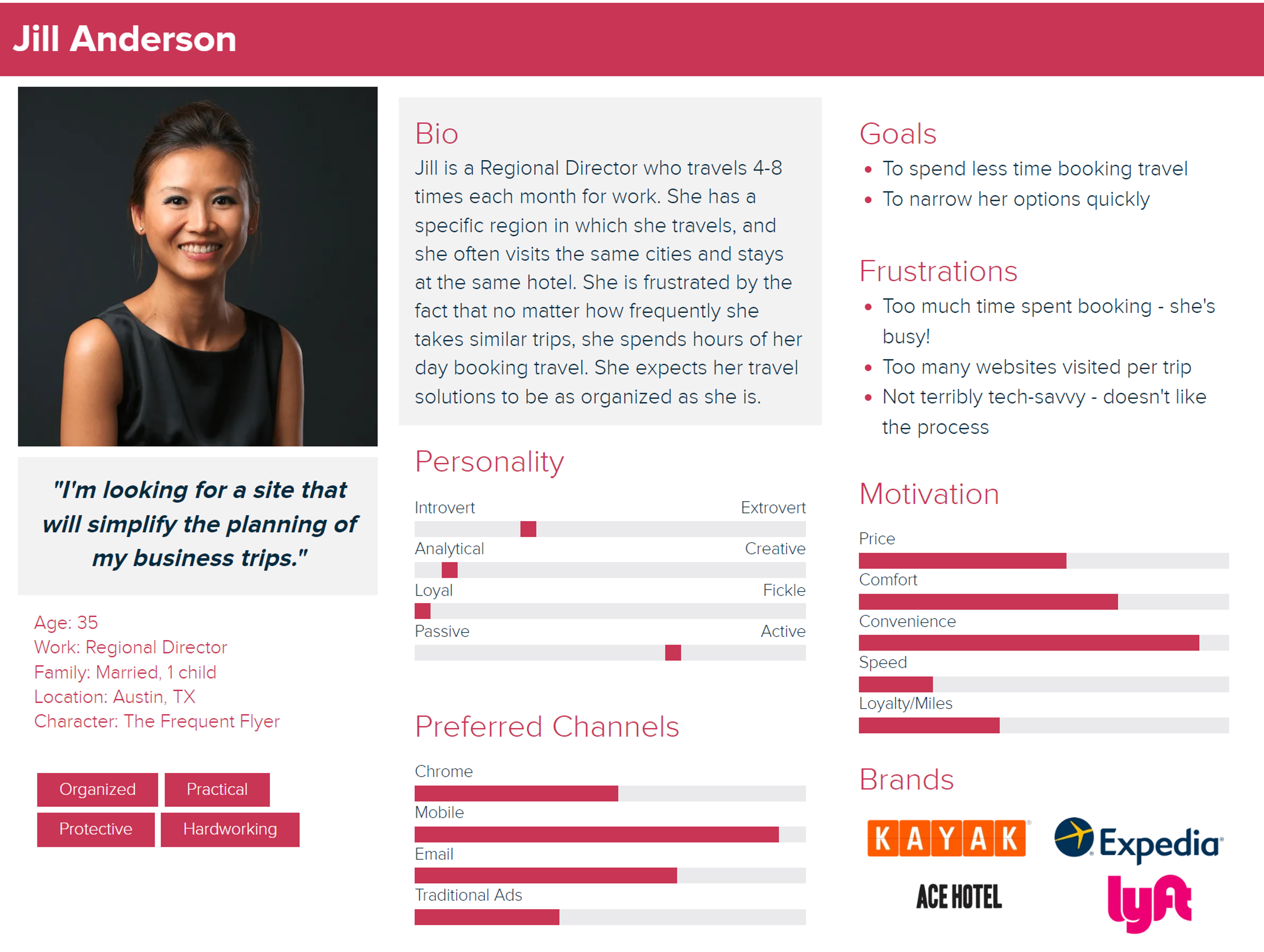
Identify Your Target User Demographic
– Who are you designing for?
Determine the distinct user groups and persona demographics (age, gender, location, etc.) that you want to target with your designs.
Personal background
The personal background of user personas includes many details such as age, gender, ethnicity, education level, and persona group (e.g., undergraduate journalist). It also provides insight into the family status, including singlehood, marital unity with children, or widowhood.
In Jill's case, she is a 35 y.o. woman from Austin, Texas. She is married and has one child.
Source: Brett Jordan / Unsplash

Professional background
The professional background of a user persona includes occupation, salary bracket, and work history.
Our Jill user persona is a Regional Director.
Gather User Data
– What are they like?
Digging deeper into psychographics helps you understand more about your users' attitudes, interests, motivations, and pain points. With a comprehensive profile of these insights, it's easier to comprehend why people use your product or service.
With Jill, it's all clear. She frequently travels for work, and her central pain point is that she spends too much time organizing each trip. Jill needs to improve with technology and find a website or app to simplify her life.
Create an End Goal
– Why do they need your product?
The end goal is the driving force that motivates users and encourages them to take action. It answers what users hope or need to attain when using your product, acting as a central focal point for marketing personas too. End goals are essential in understanding user preferences and needs so you can create something that meets their demands.
Source: Markus Winkler / Unsplash

Jill is very organized and likes to visit only one website to plan her trips - she wants everything to be collected in our place. For instance, if you were to design a travel helper for this user persona, you'd first think about merging booking tickets, hotels, and transfers in one place.
Find Scenarios of Interaction
– How do they use your product?
User personas are only valuable when they are connected to a relevant scenario. A hypothetical situation must be created that illustrates how the user persona would interact with an item and fulfill its desired objective(s). When user personas have scenarios, they become actionable. Otherwise, they're unproductive daydreams.
Source: Christin Hume / Unsplash

When designers pair design personas with scenarios, they can better understand the principal user flows.
This allows designers to compile requirements that lead them toward devising design solutions that meet those necessities.
To capture this perspective more accurately, the scenarios should be written at an elevated level, and potential cases of usage should be delineated.
If Jill found your product convenient, she'd use it 4-8 times a month. It could close all her pain points and make her a loyal customer.
UX Persona Examples
Here are some best examples of UX personas:
The Influencer
This influencer persona template stands out because of its innovative use of visuals. Instead of relying solely on text, it incorporates icons, large numbers, and bar charts to present key information clearly and visually appealingly. Each section is well-organized and easy to scan, absorbing the content quickly.
One of its most striking features is the large image, which immediately adds personality and makes the persona feel more engaging.
Source: justinmind
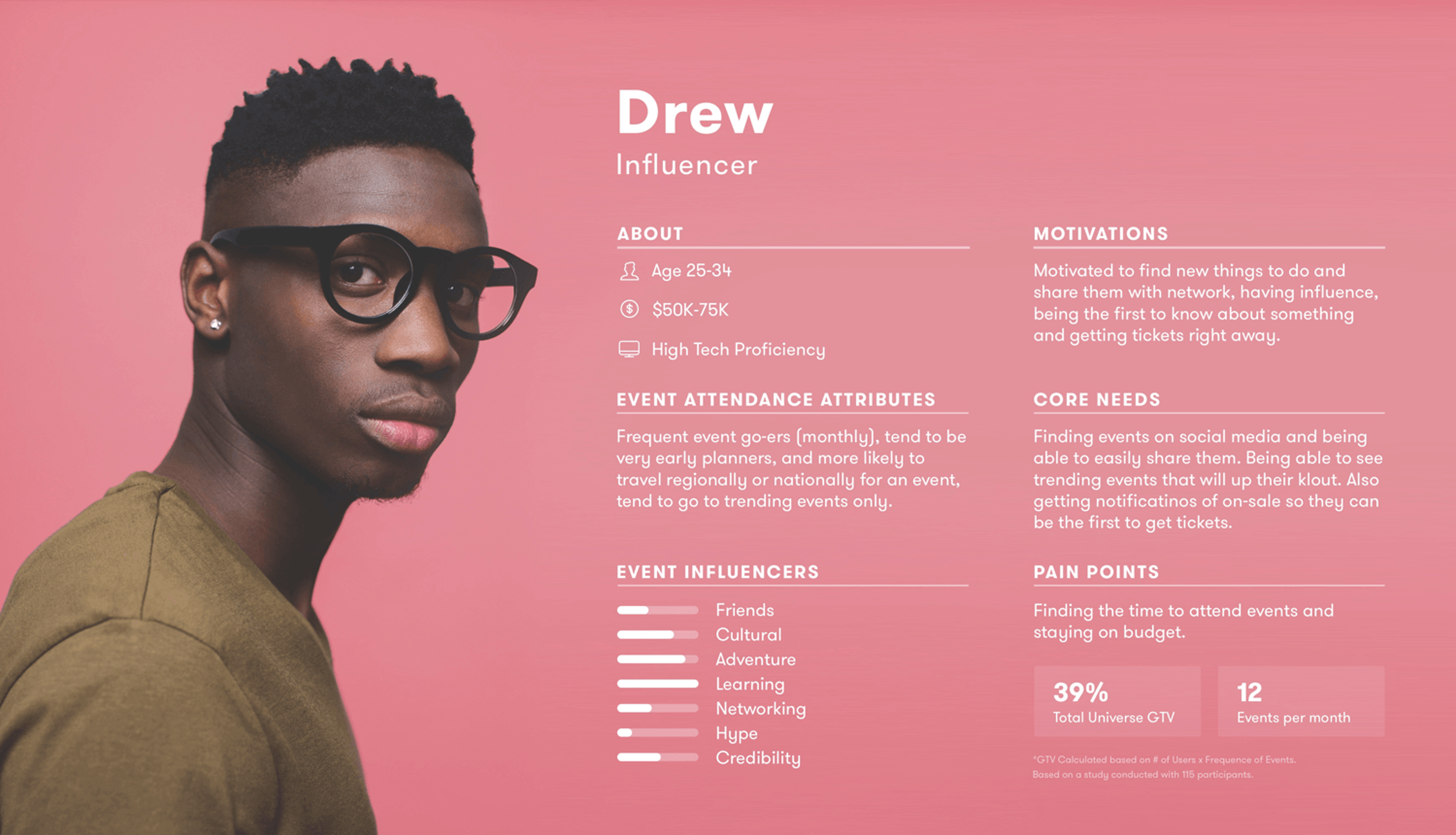
The Software Architect
Lisa, who resides in New York, NY, is a 32-year-old software architect at her company. She guides and strategizes its growth.
Since her background is in computer science, she understands how big organizations work and the improvements they struggle to make due to bureaucracy, resistance to change, and the slow adoption rate of new processes.
In order for her team to be productive, Lisa focuses on improving communication and automating workflows, which helps overcome those challenges.
She aims to increase the level of innovation and efficiency in her company’s processes, which would enable the company to adapt to modern standards with ease.
She is determined to empower systems within the corporation for enduring success, regardless of the obstacles of working in a corporate system.
Source: venngage
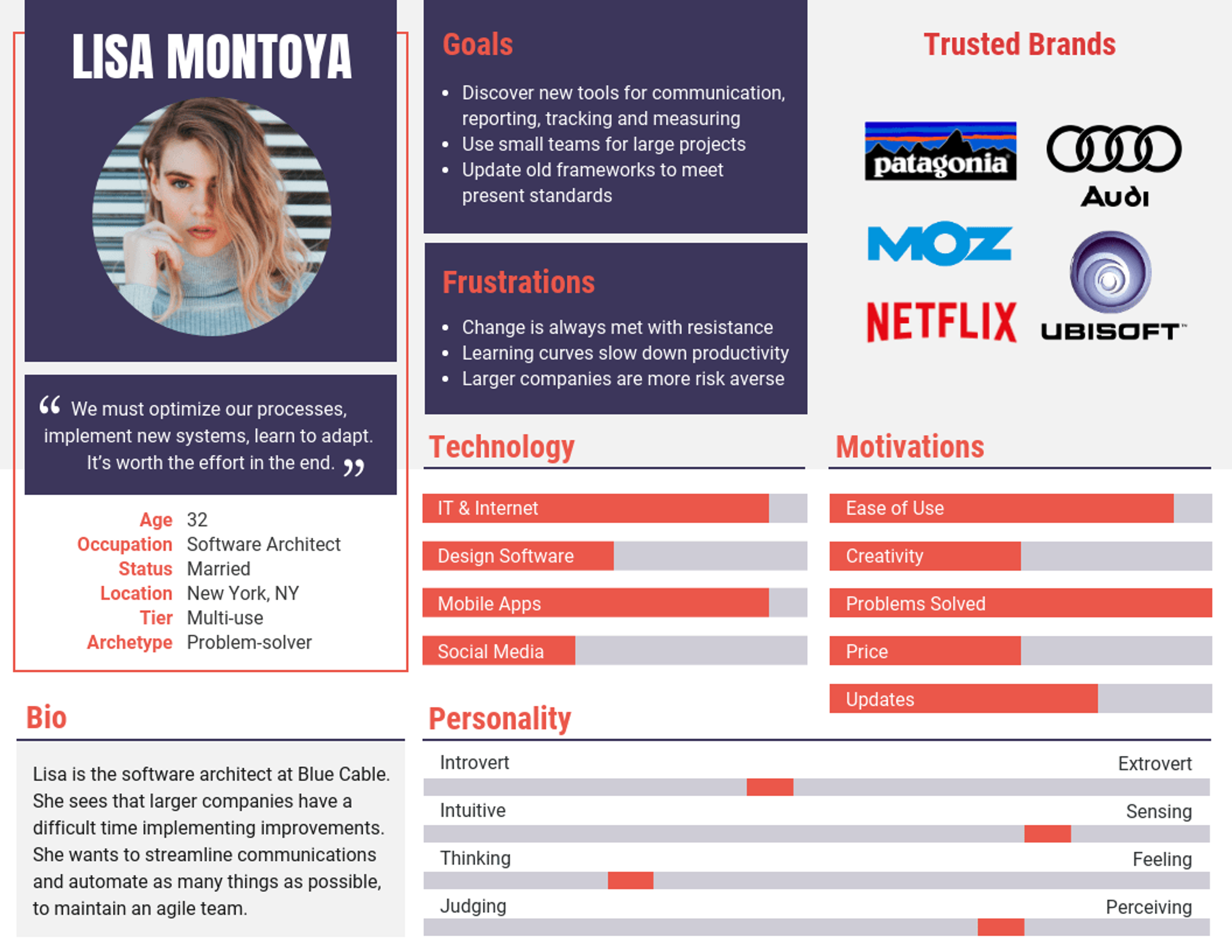
The Sales Manager
This user persona template is imbued with functionality, making grasping audience insights easier for different marketing, product development, and other teams. Imagine a culturally diverse group of people trying to access a document but facing immense complexity.
This template eliminates such hurdles by displaying critical points in an easy-to-digest manner. Instead of quoting the persona, their motivations and hurdles have also been captured using direct saying, which helps the team form strategies that remove their goals and aid in meeting the team's goals.
The easy-to-read and decipher layout enhances efficiency and ensures information is saved and used correctly. The template helps gather information through an actionable approach, which makes it easier to process. While other persona templates will likely provide more options, this template truly shines with user-friendliness and lack of ambiguity.
Source: maze.co
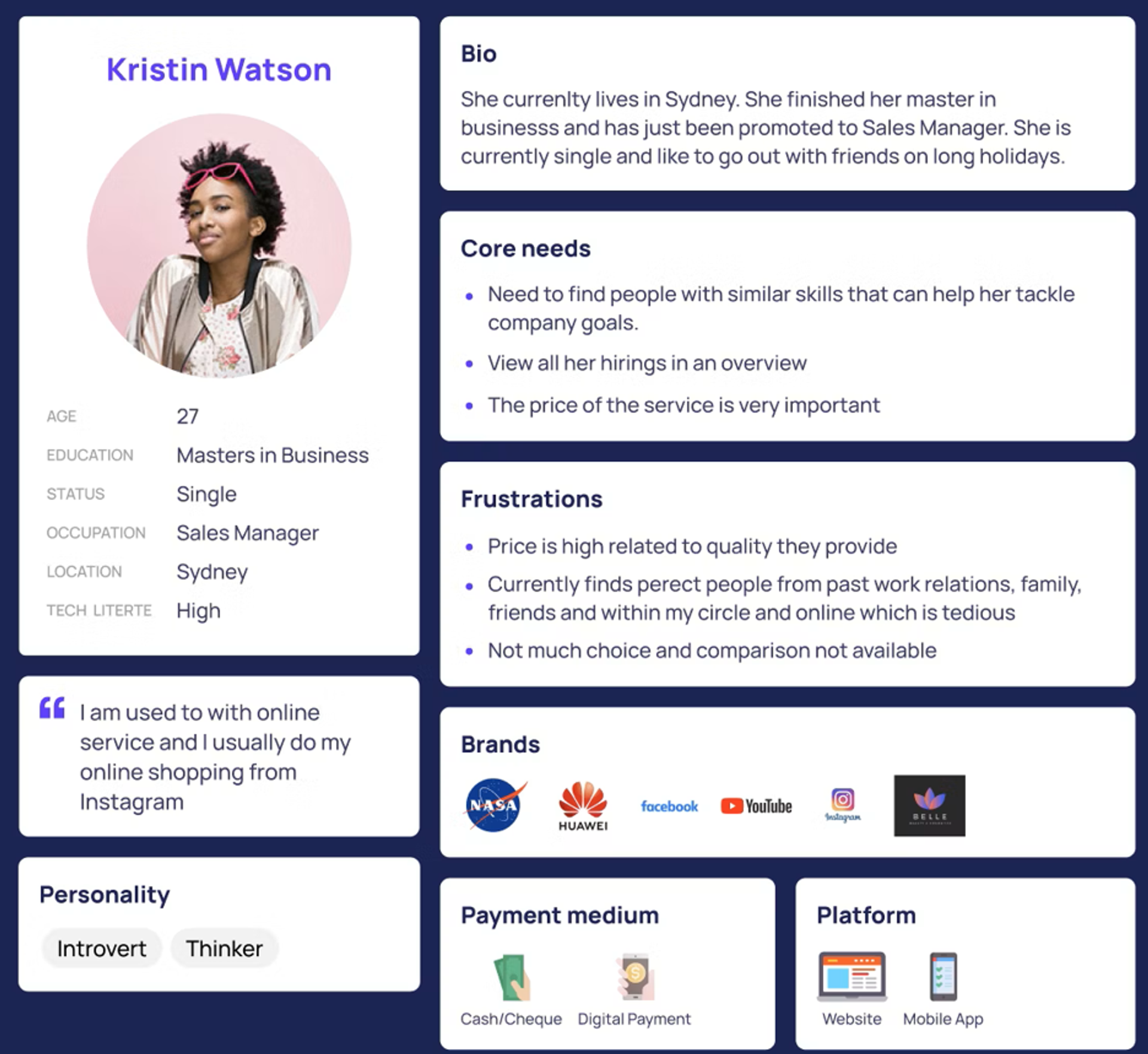
Where to Find a User Persona Template
A user persona enables designers to understand user needs and preferences better. So, where can you find user persona templates?
You can start by looking online! Many user persona templates are free and downloadable from websites such as Template.net, HubSpot, and UXPin. Some templates come with helpful instruction manuals, so it's easy to create to create effective user personas in no time.
Source: Freepik
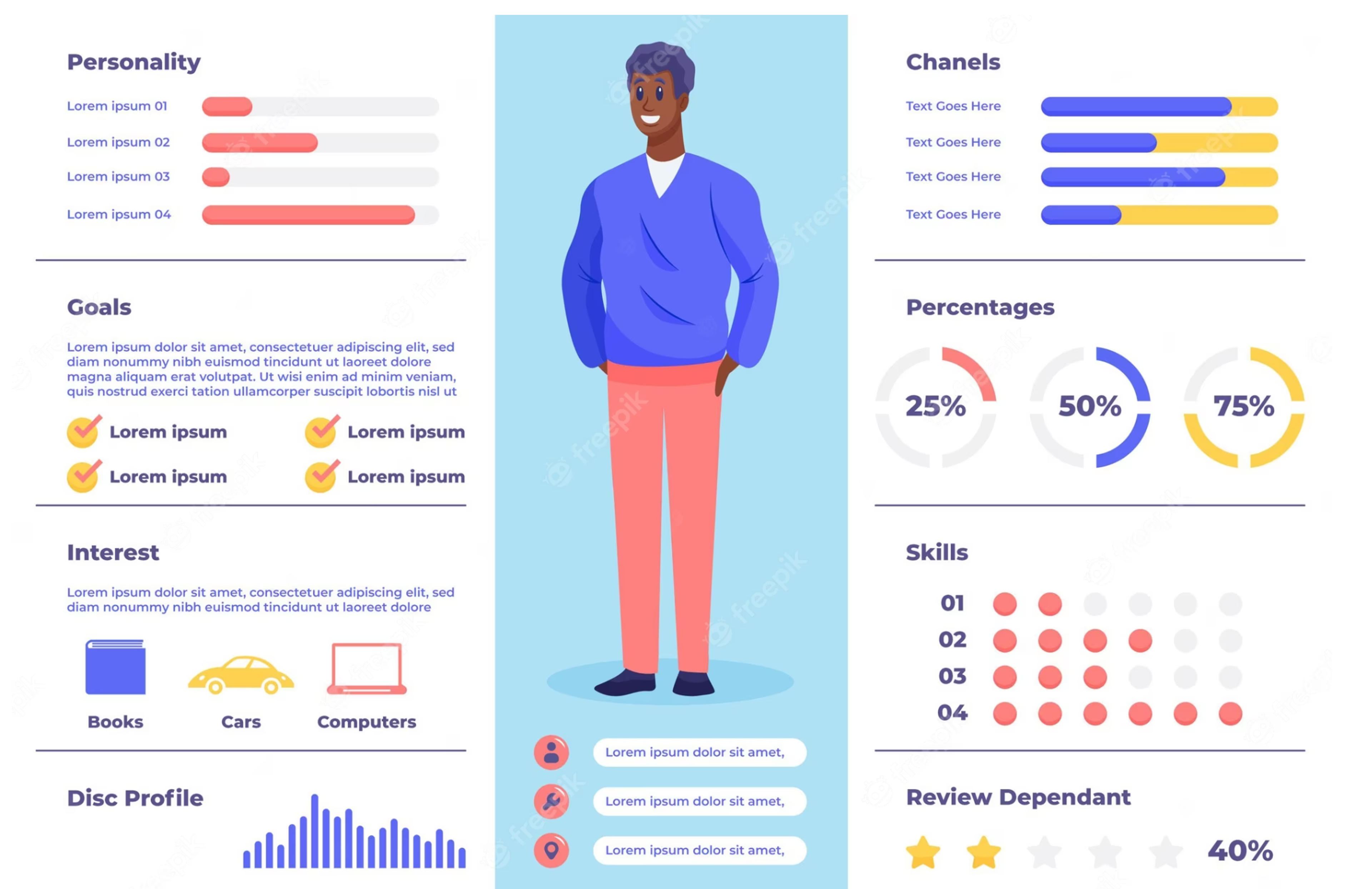
Another great option is to use a user persona creation tool like Xtensio. Such tools make the user persona-building persona creation process even easier by offering interactive forms that allow users to quickly fill out the information about their customers and target user groups.
Once your user personas are created, you can use them as a reference point when making user-centric design decisions. They'll help you understand user behavior and preferences so that you can create the best user experience possible. So, if you're looking for user persona templates, these options should get you started!
Read More:
Conclusion
Personas are a precious tool for UX designers, allowing them to tailor user experiences to meet user needs and preferences. Following the steps outlined above can help UX teams create effective user personas to inform design decisions and provide valuable insights into user behavior. With user personas, UX teams can create meaningful user experiences for their target audience.


About Clay
Clay is a UI/UX design & branding agency in San Francisco. We team up with startups and leading brands to create transformative digital experience. Clients: Facebook, Slack, Google, Amazon, Credit Karma, Zenefits, etc.
Learn more

About Clay
Clay is a UI/UX design & branding agency in San Francisco. We team up with startups and leading brands to create transformative digital experience. Clients: Facebook, Slack, Google, Amazon, Credit Karma, Zenefits, etc.
Learn more

